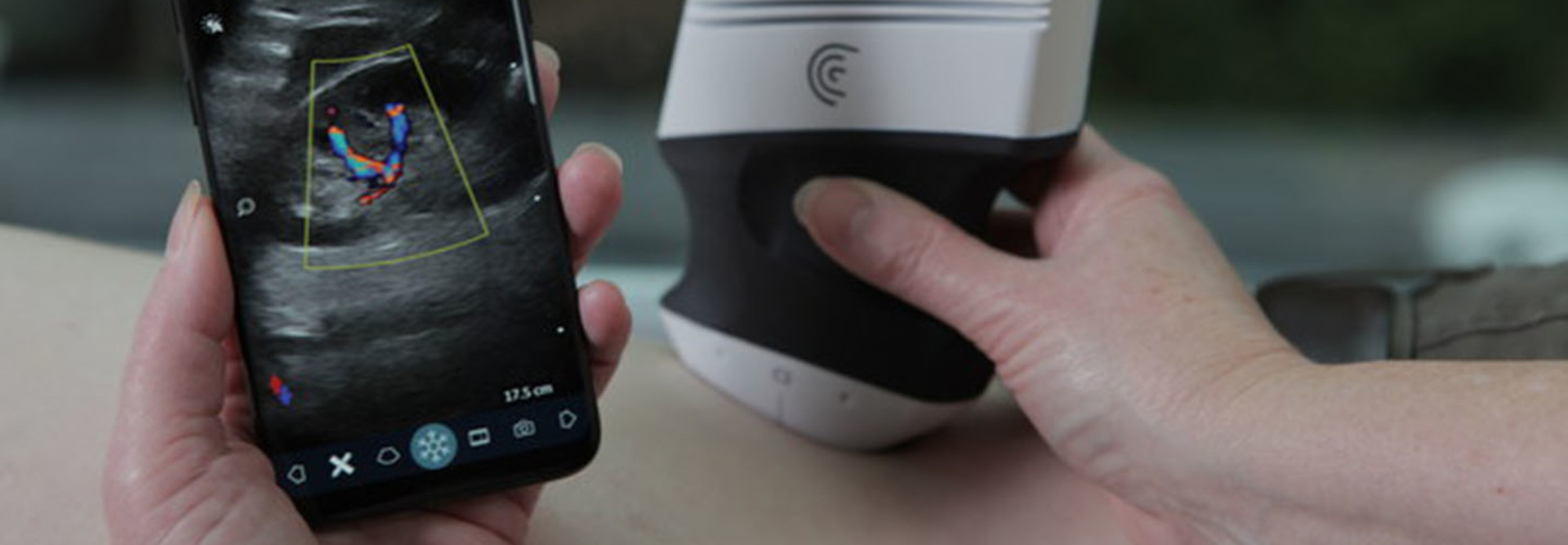Portable Ultrasound Enables Anytime, Anywhere Imaging
You might call handheld ultrasounds the Swiss army knife of medical technology. They offer access to imaging in the field, where console tech isn’t available or practical. And for medical training, they bring the pages of anatomy and physiology textbooks to life.
They’re especially handy in the emergency room, when minutes matter. And specialists — early adopters include obstetricians and cardiologists — use the technology to engage patients with real-time views when they might otherwise have to wait weeks for a traditional ultrasound appointment.
Dr. Evan Muse, a cardiologist at the Scripps Clinic in La Jolla, Calif., uses point-of-care ultrasound to quickly assess heart conditions and guide him during procedures, such as inserting a central venous line. But he also uses the real-time images to help his patients better understand their conditions and drive home the importance of prevention.
Smartphone Ultrasounds Offer Cheaper, Faster Options
The Scripps Clinic’s point-of-care tech includes add-on apps that allow users to create custom protocols and aid in diagnostics.
“We frequently use handheld units in the clinic, even on early consultations,” Muse says. “The process of letting a patient be a part of getting an image of their heart is really astounding. Most people have never seen that.”
He can also show patients early signs that their body is compensating for high blood pressure, for example — even if they don’t feel any symptoms. “They’re very much engaged. They have a better understanding of what I’m looking at,” Muse says. “It helps me sell that preventative aspect a little more.”
Muse, who’s also an assistant professor at the healthcare tech-focused Scripps Translational Science Institute, notes the devices are not only smaller and faster, they’re also much less expensive.
“I think it’s wasteful,” he says of traditional sonograms, adding that the shift from volume- to value-based reimbursement, plus rising health insurance deductibles that leave patients on the hook for more of their medical costs, likely will further drive adoption.
Portable Ultrasounds Personalize, Simplify Training
Recent research suggests the portable ultrasound market will grow 20 percent annually through 2022, driven primarily by performance improvements and increased availability of tools. At the Yale School of Medicine in New Haven, Conn., medical students train on devices including an app-based ultrasound tool that comes with a transducer that can plug into any smartphone or tablet.
Users can also take advantage of remote viewing via the app, turning their device of choice into a telehealth tool with two-way audiovisual calls and live ultrasound streaming.
The solutions have huge potential for how providers train future doctors, both locally and globally, says Dr. Rachel Liu, an assistant professor of emergency medicine at Yale and director of point-of-care ultrasound education.
“If a student has a question, they can call me, I can see where their probe is on the tablet and I can see their screen and they can see me,” she says. “I can see the patient, I can see how they look, I can give voice guidance. It makes everything more personal and easier to teach without requiring so many man-hours at the students’ side.”
The solutions also serve as a recruitment tool for residency programs and healthcare organizations, Liu says.
“I don’t know that we’ve gotten to the stage where doctors are expecting it,” she says. “But hoping for it? Definitely.”









